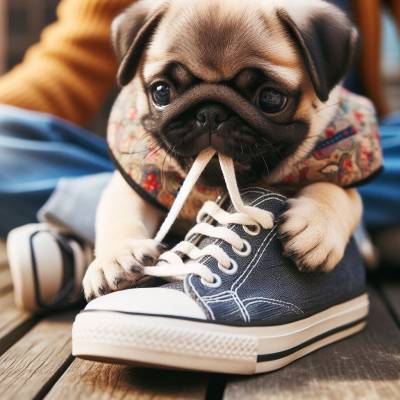What Basic Commands Should a Dog Know — From Sit to Stay and Beyond

Disclosure: This post contains affiliate links. As an Amazon Associate, I earn from qualifying purchases—at no extra cost to you.
When I brought my pugs home, life got a whole lot louder—and a little messier, too. They were cute beyond belief, but also stubborn little bundles of chaos. It didn’t take long to realize I needed to teach them some basic commands, or I’d lose my mind just trying to get through a simple walk or vet visit.
Even just a few commands can make life with a pug way more manageable. And yes, they’re totally capable of learning them—despite what their dramatic sighs might suggest.
Start With Sit, Stay, and Come
These three are the foundation. Sit is usually the easiest to teach. My pug figured it out quickly, especially once she realized treats were involved.
I’d hold a snack above her head and move it back slowly. Her little rear would plop down, and she’d get her reward. Easy win.
Stay takes more patience. Pugs aren’t big fans of sitting still unless they’re napping. We started with just a few seconds at a time and slowly worked up. I gave her lots of praise when she managed to hold still—even for a short while.
Come is the one I rely on the most. It’s incredibly useful when she’s about to bolt toward a squirrel or investigate a mystery smell across the street.
Down and Leave It: Totally Worth Teaching
Down didn’t come easy at first. She gave me a look like, “You really expect me to lie down right now?” But I stuck with it. Luring her into position with a treat in my closed hand helped a lot.
Leave it has been a lifesaver. From food scraps on the sidewalk to grabbing my socks—she hears it daily. It takes repetition, but once it clicks, it really sticks. It’s one of the best safety cues a pug can learn.
Commands That Make Grooming Way Easier
Bath time, nail trimming, ear cleaning—you name it, pugs usually aren’t fans. That’s where a few extra commands can save your sanity.
I taught mine to stand and wait on a towel during baths. She still grumbles, but she stays put long enough for me to get the job done. Touch is another great one. Having her put her nose or paw on my hand makes things feel more like a game and less like a battle.
Little commands like these turn stressful tasks into smoother routines.
Pug-Specific Tips From Everyday Life
Pugs are smart, but they’ve got a stubborn streak. Training needs to be short, fun, and full of praise. I usually keep sessions under ten minutes and always end with something easy so we both finish on a high note.
I also watch treat portions closely. Pugs gain weight quickly, so I break treats into tiny pieces or use boiled chicken. Sometimes I use their regular kibble and save the special treats for trickier commands.
Praise matters just as much as the reward. A simple “Good girl!” gets my pug’s tail wagging faster than anything else.
Conclusion
Teaching your pug a few basic commands makes a big difference. It keeps them safer, helps you manage their quirky behavior, and builds trust between you both. The key is patience, consistency, and finding what motivates your pug—whether that’s a bit of cheese or just hearing they did a good job.
Start small. Keep things light. And don’t forget to celebrate the little victories.






